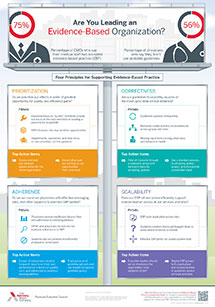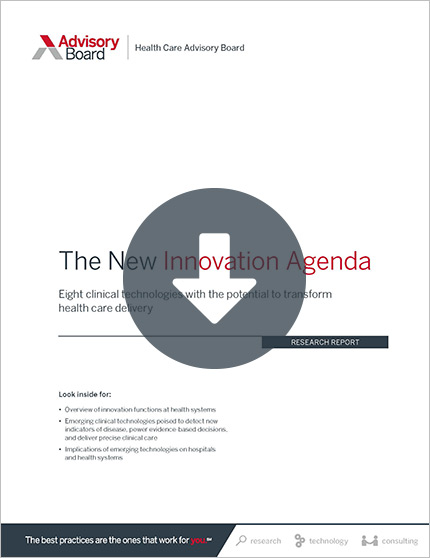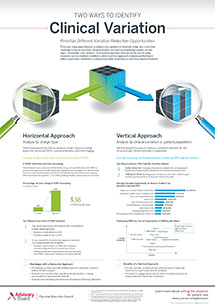Auto logout in seconds.
Continue LogoutA special report by University of Pennsylvania health care economists suggests the health care industry suffers from an "acute" problem with "deceptive, misleading, unsubstantiated, and foolish statements"—which they refer to as health care "BS."
Cheat sheet series: Evidence-based practice 101
From Theranos to Watson: BS is everywhere
In a special report published Wednesday, Wharton School health care economists Lawton Burns and Mark Pauly wrote that in recent months, "we have observed several notable signs of deceptive, misleading, unsubstantiated, and foolish statements—what we will call 'BS'— in the health care industry."
Burns and Pauly cited numerous examples of health care "BS," including Theranos, which claimed painless finger-prick technology could conduct comprehensive blood tests from a few drops of blood, and IBM Watson, which claimed the company's software that uses artificial intelligence (AI) algorithms could recommend cancer treatments for individual patient with 13 types of cancer. In addition, they pointed to "claims that the proposed CVS-Aetna merger will turn your local pharmacy into a neighborhood 'health care hub.'"
But what motivates members of the health care industry to make misleading and unsubstantiated claims? Burns and Pauly wrote, "While flat-out dishonesty for short term financial gains is an obvious answer, a more common explanation is the need to say something positive when there is nothing positive to say." They noted, "The incentives to generate BS are not likely to diminish—if anything, rising spending and stagnant health outcomes strengthen them—so it is all the more important to have an accurate and fast way to detect and deter BS in health care."
10 common forms of deception in the health care industry
Burns and Pauly compiled a list of 10 common forms of deception in the health care industry—or as they call, it, a "BS Checklist Manifesto." Here's what's on their list:
1. Top-down solutions
High-level executives typically formulate solutions to address company problems. Other employees down the chain of command are then put in charge of implementing the proposed solutions—often without an opportunity to provide feedback, guidance, or revisions. This approach to problem-solving reflects a "disconnect between the 'Front Office' (C-suite), which decides what to do and what to change, and the 'Front Line' (doctors and nurses) who are supposed to carry out the plans." According to Burns and Pauly, this approach "usually fails," but "is pursued widely in health care."
Burns and Pauly cite alternative payment models as an example of this problem in action. Top management in the health care industry "is supposed to engineer" alternative payment models, but "[p]lans to engage physicians have stalled, Burns and Pauly wrote.
2. One-size-fits-all, off-the-shelf
Many of the solutions designed to address problems in health care assume one solution will work for multiple organizations—without customization. But, Burns and Pauly argued these broad solutions fail to acknowledge "special features of the health care sector, like the need to give authority to physicians and nurses and the special risks of errors, [that] would require specialized knowledge."
As a result, "[h]ealth care is often the next hapless victim of the latest model which, at best, has been found to work in some entirely different industry and sometimes has not been tested at all," according to Burns and Pauly.
3. Silver-bullet prescription
Those broad solutions come in many forms, but one of them is the "silver bullet," Burns and Pauly wrote. A "silver bullet" is often described as something that will cure all of your ills" and must be implemented because "it has already been decided that it is good for you," Burns and Pauly wrote.
According to Burns and Pauly, electronic health records (EHRs) are a prime example of a silver-bullet prescription. Burns and Pauly said the federal government pushed the use of EHRs, claiming the systems would reduce costs and improve quality—but Burns and Pauly argue EHRs "eventually raised costs and only mildly touched a few quality dimensions."
4. Follow the guru
Top-down solutions are sometimes "abetted by the presence of a visionary Guru with a mystical revelation about what needs to be done," Burns and Pauly write. In health care, for example, Harvard professor Michael Porter "championed value-based competition" and former CMS Administrator Don Berwick "popularized" the so-called Triple Aim—which focuses on care quality, population health, and per-capita cost, Burns and Pauly wrote.
But there is a problem with the visionary ideas endorsed by gurus, Burns and Pauly wrote. They explained, '"Value' (quality divided by cost) is hard to compute; as the late Uwe Reinhardt observed, we don't know what health care really costs and then we divide it into a broad 'vector' of quality statistics, which either individually or taken together do not measure what patients value or how much they value it."
5. Disruption
The term "disruptive innovation" was popularized by Clayton Christensen, and in health care, the term has widely applied, Burns and Pauly wrote. They note retail clinics, ambulatory surgery centers (ASCs), and single specialty hospitals were all touted as things that would disrupt the health care industry. But, according to Burns and Pauly, "retail clinic growth has stalled, physicians have increasingly sold their ASCs to hospitals (who also developed their own), and the Government outlawed the single specialty hospitals in 2010."
"So far no model offering 'much cheaper, almost-but-not-quite-as-good quality' care has taken over in this sector," Burns and Pauly wrote.
6. Stage models
According to Burns and Pauly, "health care consultants, executives, and policymakers are very fond of 'stage models'—planned endeavors in which things build upon prior efforts in linear progression over time." For example, in recent years the health care industry saw the federal government's three-stage meaningful use program and a four-stage movement to value-based care.
Yet, Burns and Pauly argue stage models are "often simplistic and wrong." They noted, "change is messy, with early results going south, not north, into the 'valley of despair,' one thing not necessarily leading to another, the need sometimes to double back, and the key role of unpredictable jumps that bypass the planned route and find a shortcut."
7. Excel sheet planning
According to Burns and Pauly, "There is a common tendency by executives and consultants to express strategic plans in terms of excel sheets—all replete with many apparently precise numbers, rosy upward-sloping growth projections, and forecasted savings into the future."
"Unfortunately," Burns and Pauly wrote, "nearly all forecasts are wrong or only randomly right, and (really) wrong the farther out the forecast."
8. Bandwagons
According to Burns and Pauly, the health care industry for years has "suffered" from "'collective movements'—i.e., everyone jumps on the fashionable bandwagon." For example, they wrote, "There have been four hospital merger waves since the 1960s, most of them bandwagon movements. There have also been fits of vertical integration, corporate diversification, and other corporate strategies tried out in health care."
However, Burns and Pauly wrote, "No one has bothered to consider that innovations adopted for bandwagon reasons and pushed during bandwagon movements rarely improve corporate performance. Ideas do not have to be evidence-based to diffuse."
9. Be like Mike
Burns and Pauly argue that some hospital executives have unthoughtfully attempted to follow the approaches taken by big-name institutions, without adequately considering whether an idea is actually replicable or would work in their own institution.
"The belief is that if you do the same X and Y as this successful company or leader," they write, "you too can 'be like Mike' (Michael Jordan)"—which is not always realistic. Rather, leaders should make sure that they critically evaluate a model's success compared to their own goals.
10. Buzzwords
"If a new strategy is described in terms of buzzwords, head for the exit," Burns and Pauly warn.
They explain, "[B]uzzwords get repeated so often that everyone thinks they mean something true. They become a shorthand for concepts that most people do not articulate, let alone understand. As a result, they become mindless babble that can never substitute for critical thinking."
Moreover, they add many of the concepts behind buzzwords, such as "synergy" and "scale," "are really difficult to achieve in health care" (Baker, "Vitals," Axios, 11/28; Burns/Pauly, "Detecting BS in Health Care," November 2018).
Cheat sheet series: Evidence-based practice 101
Been awhile since your last statistics class? It can be difficult to judge the quality of studies, the significance of data, or the importance of new findings when you don't know the basics.
Download our cheat sheets to get a quick, one-page refresher on some of the foundational components of evidence-based medicine.
Don't miss out on the latest Advisory Board insights
Create your free account to access 1 resource, including the latest research and webinars.
Want access without creating an account?
You have 1 free members-only resource remaining this month.
1 free members-only resources remaining
1 free members-only resources remaining
You've reached your limit of free insights
Become a member to access all of Advisory Board's resources, events, and experts
Never miss out on the latest innovative health care content tailored to you.
Benefits include:
You've reached your limit of free insights
Become a member to access all of Advisory Board's resources, events, and experts
Never miss out on the latest innovative health care content tailored to you.
Benefits include:
This content is available through your Curated Research partnership with Advisory Board. Click on ‘view this resource’ to read the full piece
Email ask@advisory.com to learn more
Click on ‘Become a Member’ to learn about the benefits of a Full-Access partnership with Advisory Board
Never miss out on the latest innovative health care content tailored to you.
Benefits Include:
This is for members only. Learn more.
Click on ‘Become a Member’ to learn about the benefits of a Full-Access partnership with Advisory Board
Never miss out on the latest innovative health care content tailored to you.



